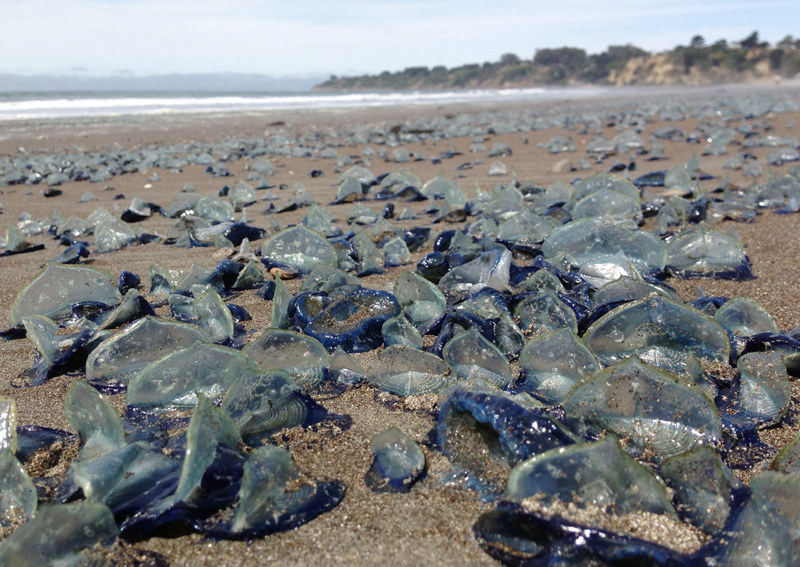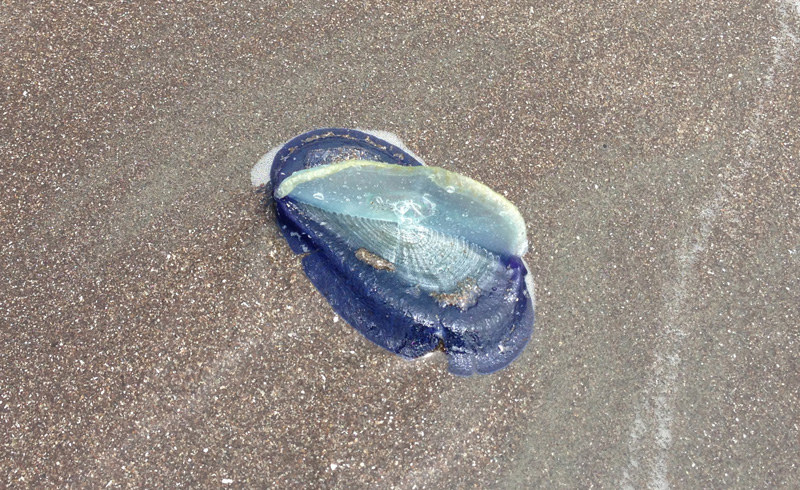
Nature’s Perfect Sailboat

On a recent visit to Stinson beach for a long, leisurely stroll on the sand, my captain and I encountered what appeared to be thousands of little rubbery toy sailboats. Upon closer inspection, we were astonished to discover they were sea creatures; intricately designed jellyfish boats, each complete with a stout hull and free-standing, beautifully transparent sail. Most of them were above the tide line, high and dry, but a few hearty vessels were actually sailing in the shallow water.
We’re always fascinated by marine life, and some research came up with their name of this boat-like species: Velella velella, a cousin of the jellyfish. Commonly referred to as "by-the-wind sailors," these stalwart little craft begin their lives mid-ocean in the Pacific, and their lives’ voyages are determined at birth by the configuration of their ‘sail’, which will send them on either a port or starboard tack. The hulls stay upright due to sealed air chambers and will float in the open ocean in search of plankton and small shellfish they capture with their stinging tentacles, unless they get caught in a wind and current situation that forces hundreds of thousands of velellas to become stranded — or should we say shipwrecked — such as those found grounded on West Coast beaches from the Pacific Northwest to Southern California.

Once washed ashore, the hulls slowly disintegrate, and the sails dry up, separate from their hull, and float along the beach. Since they are in the jellyfish family, it is wise not to touch these delicate creatures, and it’s suggested that you wash carefully if they come into contact with your skin.
Every sailor hopes for an uneventful journey, safe from predators and beach landings. If Velellas can escape being driven ashore or being gulped by a sea slug or sunfish, they reproduce and spend their average life expectancy of a year, blissfully underway. If human sailors are lucky, they may encounter masses of these little blue ships in temperate seas. The average overall length of the creatures we observed was about three inches, but several were larger. Once again, the sea provided treasures when least expected.
